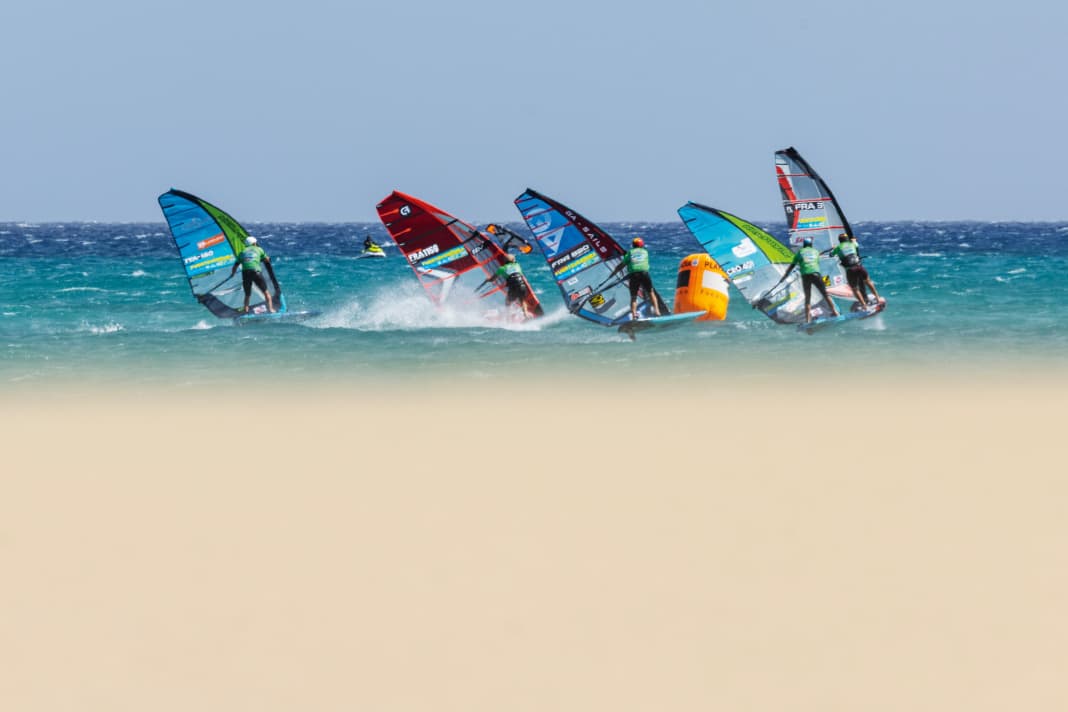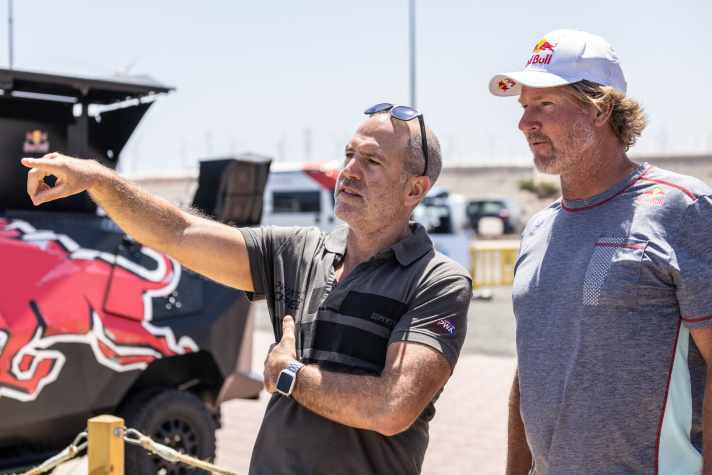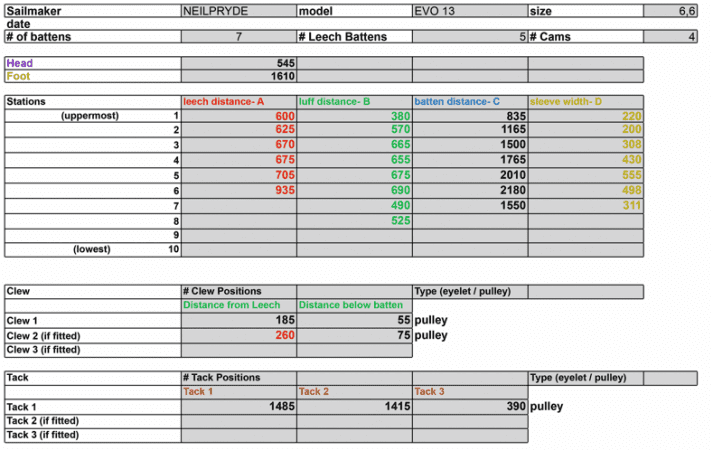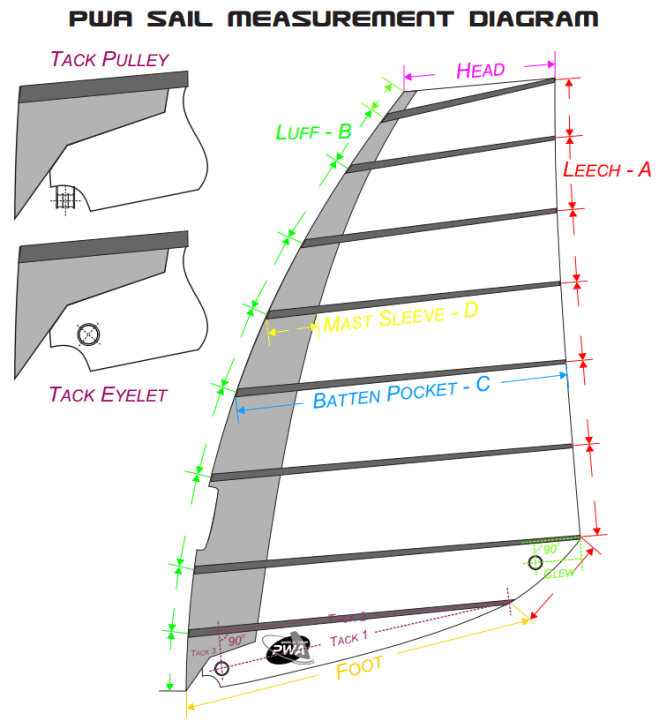





Rules are rules - that was the prevailing opinion in the PWA paddock after Johan Søe's tragic disqualification at the season finale in Japan, which cost the young Dane the world slalom title. His sails deviated all too clearly from the series specification and were subsequently modified - an absolute no-go according to PWA rules.
Naturally, there were a lot of rumours and speculation after such a spectacular disqualification. That's why we asked Rich Page, Tour Manager of the PWA, what rules the participants and manufacturers in the World Cup have to take into account.
In slalom, only standard equipment is allowed, are there also equipment restrictions in freestyle and wave or are customised mades allowed there?
Rich Page: Freestyle is also ridden with production equipment, but with ongoing registration, as the rules are more about cost reduction than performance advantages, which do not exist in the same way in freestyle compared to slalom. Custom equipment can be used in the wave discipline, but most worldcuppers still use production equipment.
Is it generally only permitted to use material from brands that are members of the PWA?
Yes, manufacturers must be members in all disciplines. This also applies to pure wave brands.
By when do the brands have to register their equipment for slalom and foil?
Slalom equipment is registered at the end of the year before the season in which it is to be used. The deadline for sails is usually 31 October and for boards and foils it is 15 December. This is due to the fact that the lead times for the production of boards are longer than those of sails.

Is there a maximum number of models and sizes per brand that you can register?
No, any brand can register as many models and sizes as they want, as long as they are within the physical limits of the rules.
A decisive point in the use of series material is the reduction of costs for the drivers and manufacturers. How many sails, boards and foils can each participant register?
In 2023, participants were allowed to register six sails and three boards as well as a set of foil components consisting of a mast, two fuselages, two front and two rear wings.
When must each participant have registered their material and is it labelled in any way?
The material is registered at the first event of the season in which a participant takes part. If possible, the material will be labelled and stamped.
Can material be exchanged during the season, for example replacing a used sail with a new sail of the same size and specifications, or can only broken material be replaced?
The exchange of the same equipment is permitted between events. Equipment may only be exchanged during an event with the approval of the jury.
What changes may the participant make to the registered equipment? May boards or foils be sanded or filled? May batten pockets or sail seams be moved within the tolerances?
A board, foil or sail can be customised if it is out of specification. This can happen during series production. But it must then always fulfil the specification registered by the manufacturer within the tolerance, otherwise it will be considered illegal.
How detailed are the specifications that the PWA receives for the products?
As detailed as the production designs and processes that the manufacturers have to submit to us.
How often is it checked during the season whether a driver is actually using the material he has registered?
The checks are random and can be carried out at any time. The equipment can be checked after a regatta by simple inspection to determine whether it is the same item that was registered, or more detailed measurements can be taken of the top drivers at an event.
To what extent can tolerances in series production be taken into account in the measurements?
There are set tolerances that vary for different items and specifications. These are agreed with the industry and include feedback from the major factories.
How do the checks work? Is there a random selection of who and what is checked, or are there also indications from competitors of unauthorised material?
If the jury becomes aware of a possible offence - whether they see something themselves, other employees observe something or a competitor informs them - they may decide to check the item in question. Alternatively, spot checks are carried out as described above.
Rules are only as good as they can be controlled. Are you even able to check the large number of products regularly and accurately enough for drivers to be afraid of being caught cheating?
We cannot check every item, this would drive up the cost of the events and harm the sport as a whole as it would mean fewer events would be possible. Participants have a responsibility to ensure that their equipment is correct. Anyone who uses or has used equipment that does not comply with the regulations will face severe penalties, which should act as a deterrent.
There are calls not to regulate the material even in slalom and foil. Wouldn't that be a great relief? But it would definitely be more expensive.
It would be much easier for us, but it would paralyse the sport financially and mean that the richest surfer wins. Some top riders used to have over 20 customised slalom boards and sails to match, that's no longer sustainable. If we went back to custom-made equipment, there would probably only be one or two riders per team with a customised budget and maybe no other competitors for cost reasons. And it would probably be extremely difficult or impossible for everyone else to keep up with the fully sponsored riders. So we would end up with an incredibly elitist tour in which only the very few would be able to participate. The opportunities for talented young riders like Will McMillan or Johan Søe would be incredibly limited
The manufacturers provide this data
What data do the manufacturers provide to the PWA for the annual registration of the series material? Robert Stroj, sail designer at NeilPryde and industry representative in the PWA, has provided us with the data for the 2022 slalom sail from NeilPryde and explains the tables and drawings.

"The Excel spreadsheet shows the current measurements that we submit to the PWA before the start of the season (the deadline was 15 December 2022 for the 2023 season and will also be 15 December 2023 for the 2024 season). The second image is a PDF drawing that explains how these measurements are taken. It shows an 8-batten sail, but a 7-batten sail is measured in the same way, except that the last line of data is skipped.

There is a tolerance of 0.35% to allow for production tolerances, any elongation and possible tolerances in the measurements. In practice, this allows a tolerance of +/-7 mm for a two metre long batten pocket or +/-3.5 mm for a one metre long leech batten spacing.
How do the drivers view the controls?
So much for the PWA rules. We asked Michele Becker, the best German in the Slalom World Cup, how he experienced the PWA controls in his first full season on the tour.
"The PWA randomly checked our equipment throughout the season. This either happened on windless days during the event, such as on Lake Garda, but also sometimes immediately when you came back ashore from a final. Checks were made to ensure that only registered items had been ridden. Of course, we mainly rely on the manufacturer's product labelling so that not everything is checked every time. This only happens if, for example, the imprints on the foil have been sanded off or if there are any other doubts that the series material has been changed. Fortunately, from what I've heard from many people, it's really rare that such a breach of the rules occurs."

